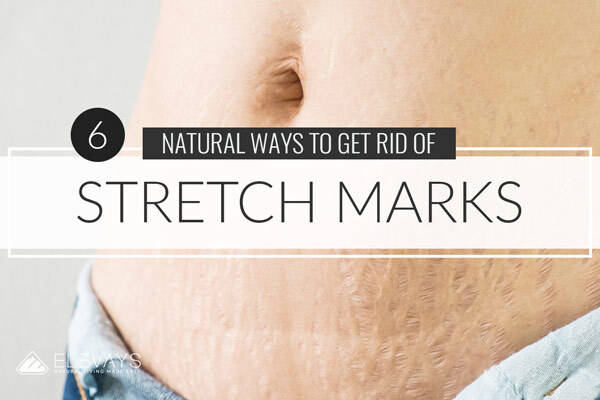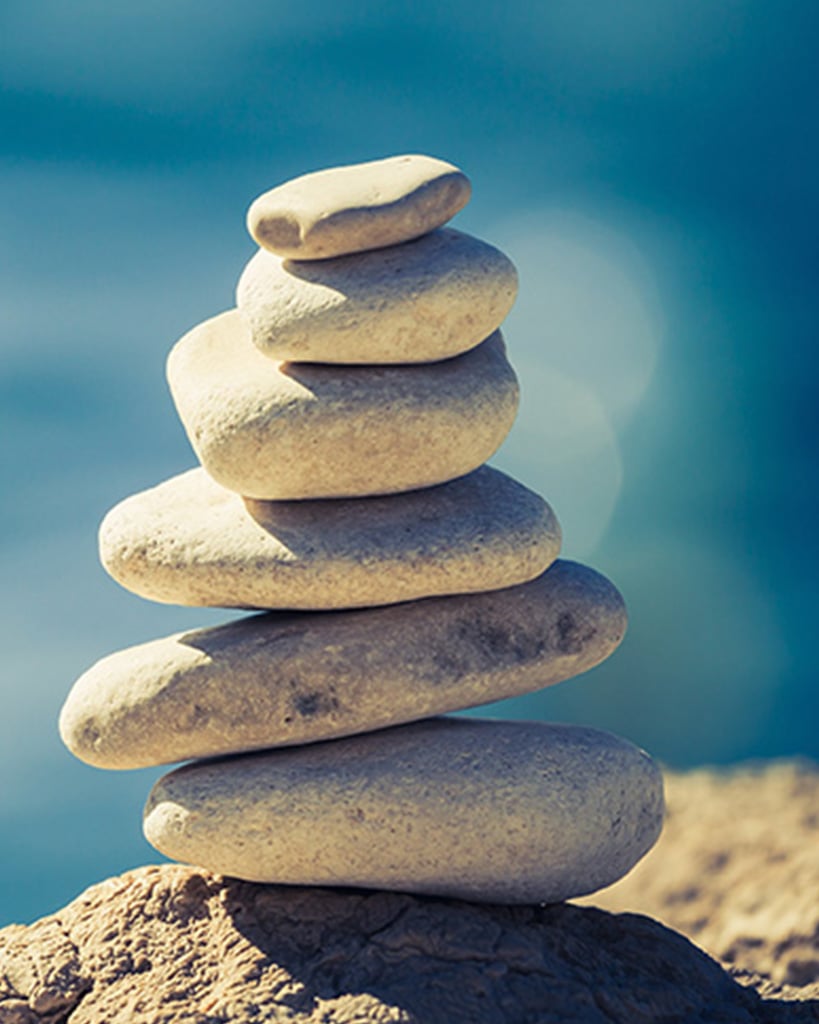Stretch marks occur when growth outpaces the skin’s ability to stretch. They’re often a mark of a woman’s resilience and strength, acquired during pregnancy or weight fluctuations. While stretch marks don’t make you any less beautiful, minimizing their appearance can help you learn to love the skin you’re in and regain your confidence. Fortunately, there are a few natural ways to combat stretch marks, both through prevention and with aftercare. Here are six natural ways to get rid of stretch marks or lessen their appearance.
Natural Exfoliation
Exfoliation plays a key role in treating and reducing the appearance of stretch marks. This essential step of the skincare process removes dry, dead skin cells from the outer layer of the dermis.
By doing so, you allow space for new skin to grow and flourish. Furthermore, you’re allowing for better absorption of the nourishing projects you apply that promote healing. One of the best ways to do this is to use a dry brush to get lymph moving and fat cells dissipating.
TRUTH BOMB:
You’re
Already killing it!
If You Were More Consistent With Your Wellness Routine, You’d Be Unstoppable.
Oatmeal
Oatmeal has long been used in skincare, thanks to its mild exfoliating grain. It’s also soothing and relaxing, making it an ideal treatment for common skin ailments like psoriasis and eczema.
You can make your own oatmeal exfoliant by blending quick rolled oats (not instant) with a bit of honey and water. Use it to scrub the area with stretch marks while in the shower.
Sugar
Using sugar as an exfoliant for stretch marks has a few overarching benefits. First and foremost, it’s a mildly abrasive substance that won’t cause irritation. Not only will a sugar scrub not detract moisture from your skin, but it could also promote healing.
Sugar contains Alpha Hydroxy Acid (AHA) that promotes cellular regeneration. AHA is a common component of cosmetic products and is often used to help combat sun damage. Blend sugar with coconut oil (or your favorite carrier oil) to make a paste, apply to damp skin, scrub, and rinse off. You can also add essential oils for a fresh, relaxing scent.
Sea Salt
Sea salt is fantastic for making an exfoliating body scrub that will help reduce the visibility of stretch marks.
Mix your sea salt with some natural herbs, like rosemary or lavender, and essential oil. Frankincense is a fantastic essential oil to use in a salt scrub, as it has potent skin repairing qualities that have been proven to reduce scarring. You can find a simple DIY frankincense salt scrub here. Wet your body then apply the scrub in a circular motion. Then, rinse off to help your skin feel nourished.
Nourish Your Skin
Using all-natural products containing skin-loving ingredients that promote elasticity and tightness can reduce the appearance of stretch marks by repairing the damage your skin sustained as it stretched.
Argan Oil
Argan oil is a potent natural oil that’s rich in vitamin E. It has both antioxidants and anti-inflammatory properties that make it a powerhouse when treating your skin. Argan oil also improves skin elasticity, which can help prevent the development of stretch marks during periods of growth.
You can learn more about how argan oil can be used as a treatment in the article about the stretch marks by the Argan Oil Shop.
Aloe Vera
Aloe vera is one of the most incredible healing plants in the world. The FDA approved aloe vera as an effective treatment for burns in 1995. The gel can also be used on other skin ailments and as a source of nourishment when applied topically. Aloe is believed to increase collagen production— an important protein used to regenerate and heal the skin.
Shea Butter
Shea butter is deeply nourishing and hydrating, which can improve skin elasticity and help prevent the development of stretch marks. Filled with healthy fatty acids and anti-inflammatory properties, it’s no wonder why shea butter is the foundation for many body butters and lotions.
Use whipped shea butter to nourish skin that’s been ravaged by stretch marks. Create your own healing balm using shea butter, argan oil, and a few drops of your favorite essential oils for an aromatherapeutic twist.
Use Skin-Loving Supplements
In addition to treating your skin from the outside, you can also nourish your body from within.
Collagen
As mentioned previously, collagen is an important protein that plays a vital role in skin regeneration. You can take this supplement in powder form as well as applying it topically. There are five types of collagen, with Type I being the most prevalent in the body. Look for a natural, collagen-rich lotion that’s free of alcohol and perfumes. Check out our Beauty Collagen Complex for beauty radiance.
Vitamins A & E
Vitamin E is a fat-soluble vitamin that also helps the skin heal and regenerate. Vitamin A often gets overlooked for promoting healing in the skin. However, vitamin A gets turned into retinol in the body. This is a common ingredient in cosmetics that cues the production of new skin cells.
Eat Nutritious Foods
Supplementation is meant to fill gaps in your diet. Many fresh foods have the nutrients your body needs for supple, healthy skin. By focusing on the food you eat, and ingesting hydrating foods, you can help promote skin healing naturally within your body.
Lean Protein
Proteins are the building blocks of life. By eating more lean protein— chicken, white fish, lentils, peas—, you can give your body what it needs to heal your skin and promote regeneration.
Micronutrients
Micronutrients are the vitamins and minerals you get from your fruit and vegetables. Eating a diet filled with leafy greens, berries, and a wide variety of produce, can help give your body the nutrients it needs to function at an optimal level. As a result, your skin will be more receptive to healing processes.
Hydrate
Hydration plays a key role in your body’s overall health and wellness. It also promotes skin elasticity and nourishment, which can help reduce the development of stretch marks over time.
Drink a minimum of eight glasses of water a day, adding more during periods of exercise and hot weather.
Time
They say time heals all wounds. It’s important to remember that stretch marks are scars and that they will fade over time. Starting treatment while your stretch marks are red and new will help ensure a reduced appearance over the following months.
By hydrating and nourishing your skin, you can promote healing and reduce the appearance of stretch marks. Now that you have these six skin-loving tricks for reducing stretch marks, which will you try first? If you’ve used any of these methods before, share your experience in the comments below.
Sources:
https://skincity.com/en/skin-guide/tips-advice/what-is-alpha-hydroxi-acid
https://arganoilshop.com/blog/argan-oil-for-stretch-marks/
https://www.sciencedirect.com/topics/agricultural-and-biological-sciences/shea-butter
https://forefrontdermatology.com/role-water-plays-skin-health/





READ the Latest
Longevity
Health Habits
Health Habits
Longevity